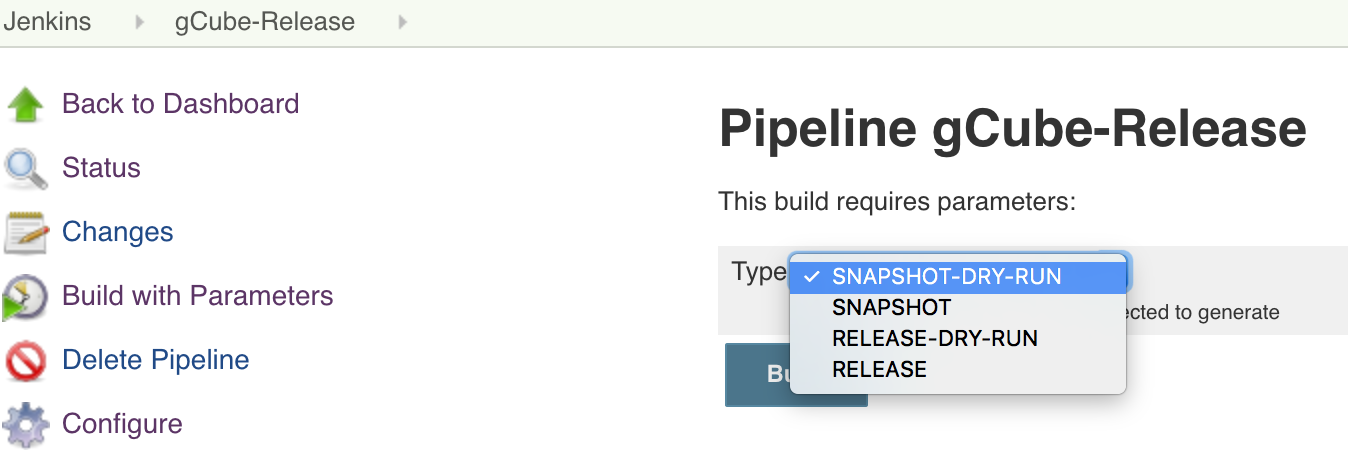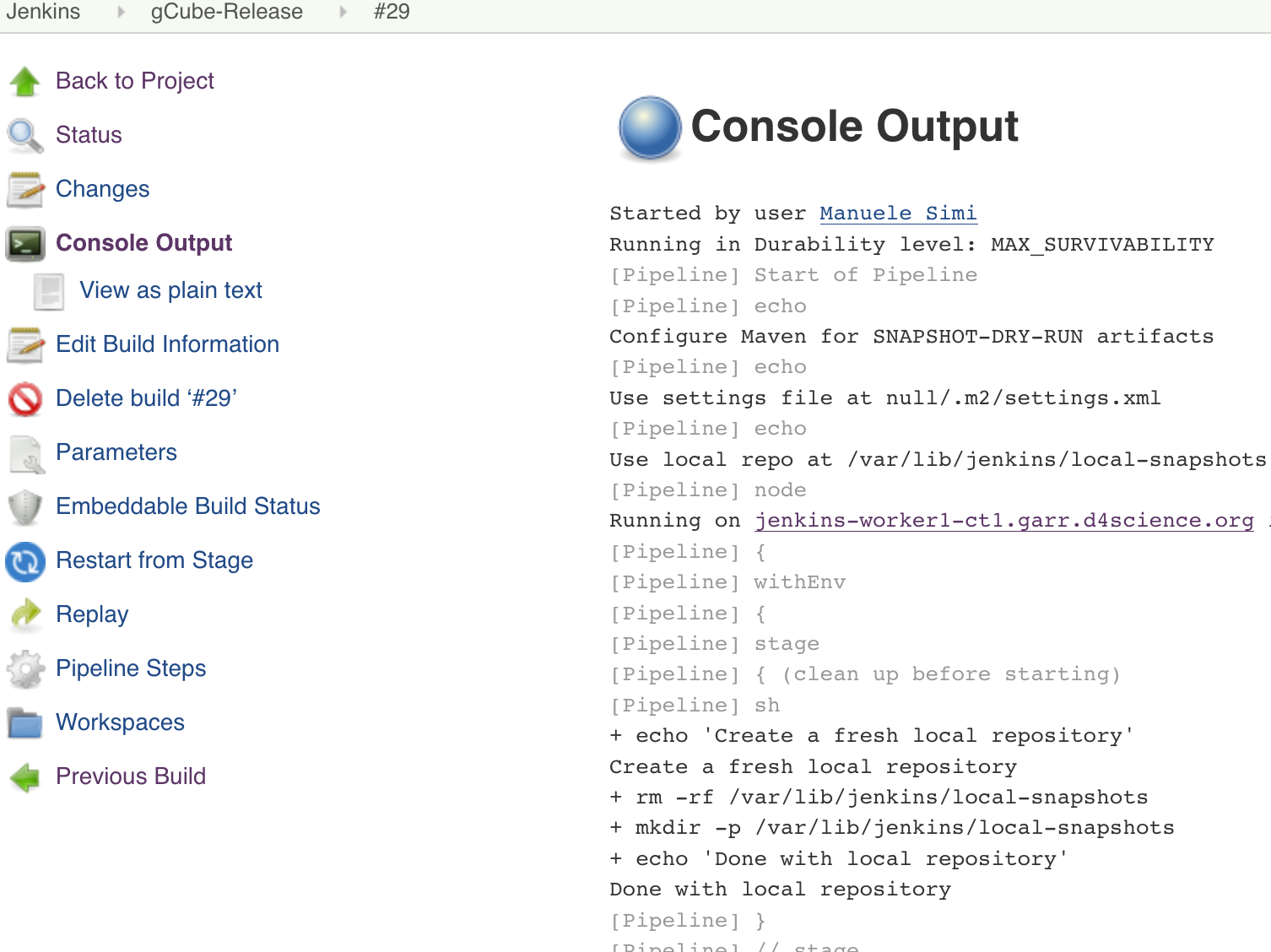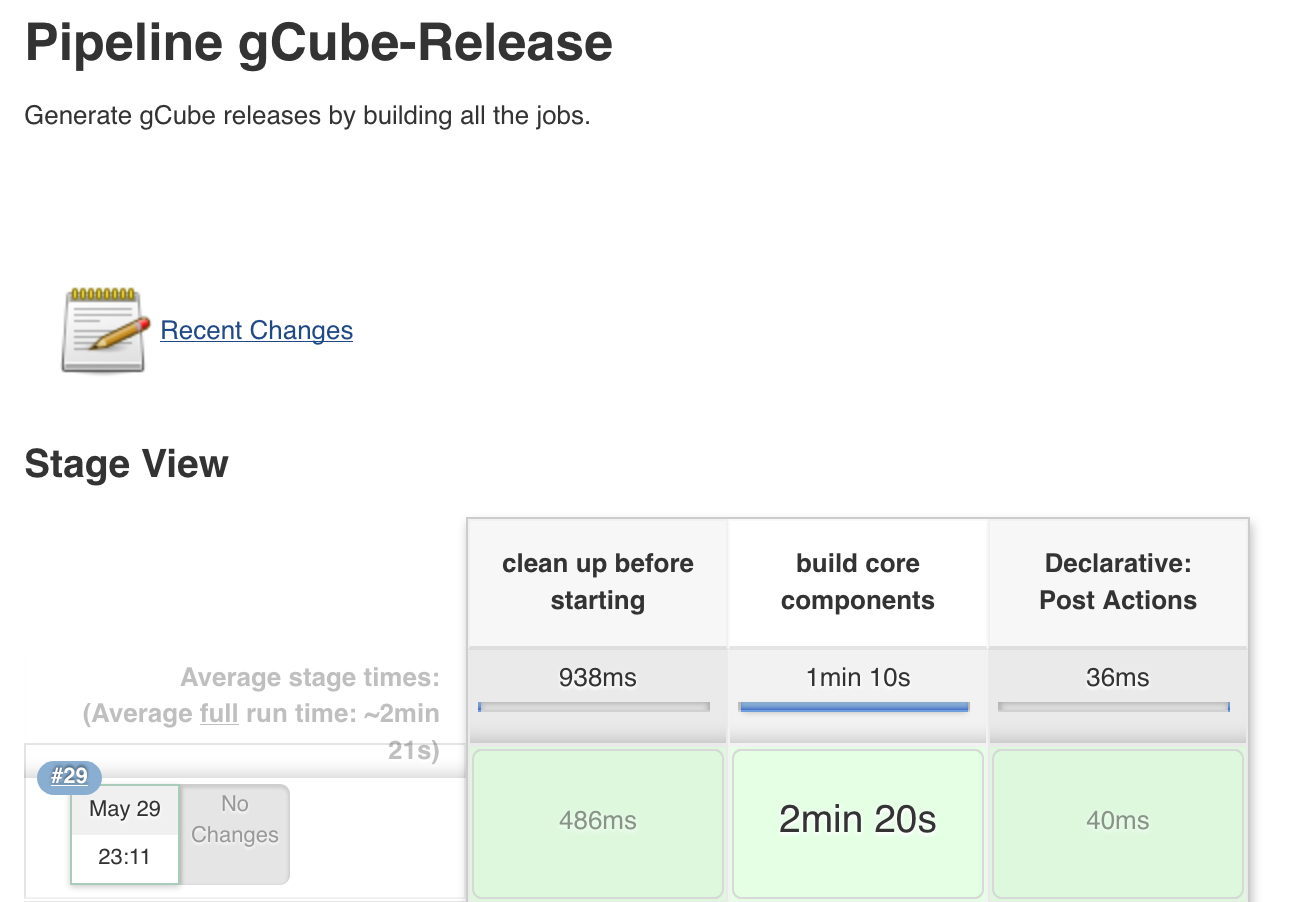Continuous Integration: Releases Manager
Contents
Responsibilities
The Release Manager is in charge of:
- Declaring when a gCube release is open and when it is closed
- Launching the build of the gCube Pipeline
- Maintaining the Pipeline Definition
Jenkins Activities
Launch the Pipeline
In Jenkins:
- select the gCubeRelease project
- on the left side, click on 'Build with Parameters'
- select the type of build we want to generate in the choice menu
- click on the 'Build' button
Type of Build
The Pipeline project can be launched in 4 different ways (Type parameter):
- SNAPSHOT-DRY-RUN (default)
- build snapshot artifacts, install the artifacts in a local repo, do not deploy
- SNAPSHOT
- build snapshot artifacts, install the artifacts in a local repo, deploy the artifacts to the gcube-snapshots Maven Repository
- RELEASE-DRY-RUN
- build release artifacts, install the artifacts in a local repo, do not deploy
- RELEASE
- build snapshot artifacts, install the artifacts in a local repo, deploy the artifacts to the gcube-releases Maven Repository
The idea behind these builds is that the Release Manager can test the full pipeline execution with the DRY-RUN builds. Once all the projects in the build work, the SNAPSHOT or RELEASE build can be launched to effectively deploy the artifacts on the remote Maven Repository.
Monitor the Execution
As any other job execution, the pipeline can be monitored step-by-step in the Console Output page of the ongoing build:
Stages Report
At least one “stage” section must be defined on the “stages” section of the pipeline. It will contain the work that the pipeline will execute. Stages must be named accordingly since Jenkins will display each of them on its interface, as shown here:
Pipeline Activities
- add/remove groups
- add/remove jobs to groups
- keep the agent label in sync with Jenkins config
- keep maven jdk in sync with Jenkins config
Back to the CI guide.


